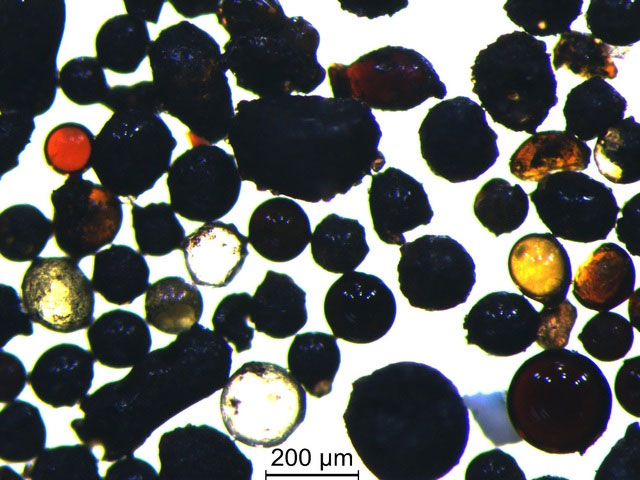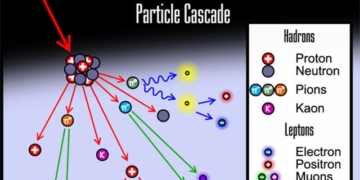The Moon’s Surface is Filled with Tiny Glass Beads – Are They Linked to the Dinosaur Extinction Event on Earth?
On September 27, a new study published in the journal Science Advances about glass beads on the Moon’s surface revealed that they formed millions of years ago.

The glass beads brought back to Earth by the Chang’e 5 rover. (Source: Beijing SHRIMP Center, Institute of Geology, CAGS).
The glass beads, ranging in size from a few dozen micrometers to several millimeters, were collected in samples brought back during China’s Chang’e 5 mission in December 2020.
Researchers analyzed these glass beads to determine their size, age, and other characteristics. They also examined lunar topographic data to identify which impact events may have formed them.
Associate Professor Katarina Miljkovic from Curtin University noted that they found these beads primarily formed around the same time and suggested that a series of asteroids impacted the Moon – or possibly a large asteroid broke apart nearby, causing a rain of glass.
The research team also discovered that the timing of the formation of these glass beads corresponds with similar significant impact events on Earth. However, due to erosion, weathering, and volcanic activity, similar samples are difficult to find on our planet.
One of the most famous meteorite craters on Earth is located in the Yucatán Peninsula, Mexico. The Chicxulub crater is believed to be the site where an asteroid struck Earth about 66 million years ago, leading to the dinosaur extinction event.
At the same time, a large number of glass beads appeared on the Moon.
Ms. Miljkovic highlighted this temporal coincidence and suggested that there may have been accompanying asteroids with the one that caused the disaster – and some of them may have fallen onto the Moon’s surface.


















































